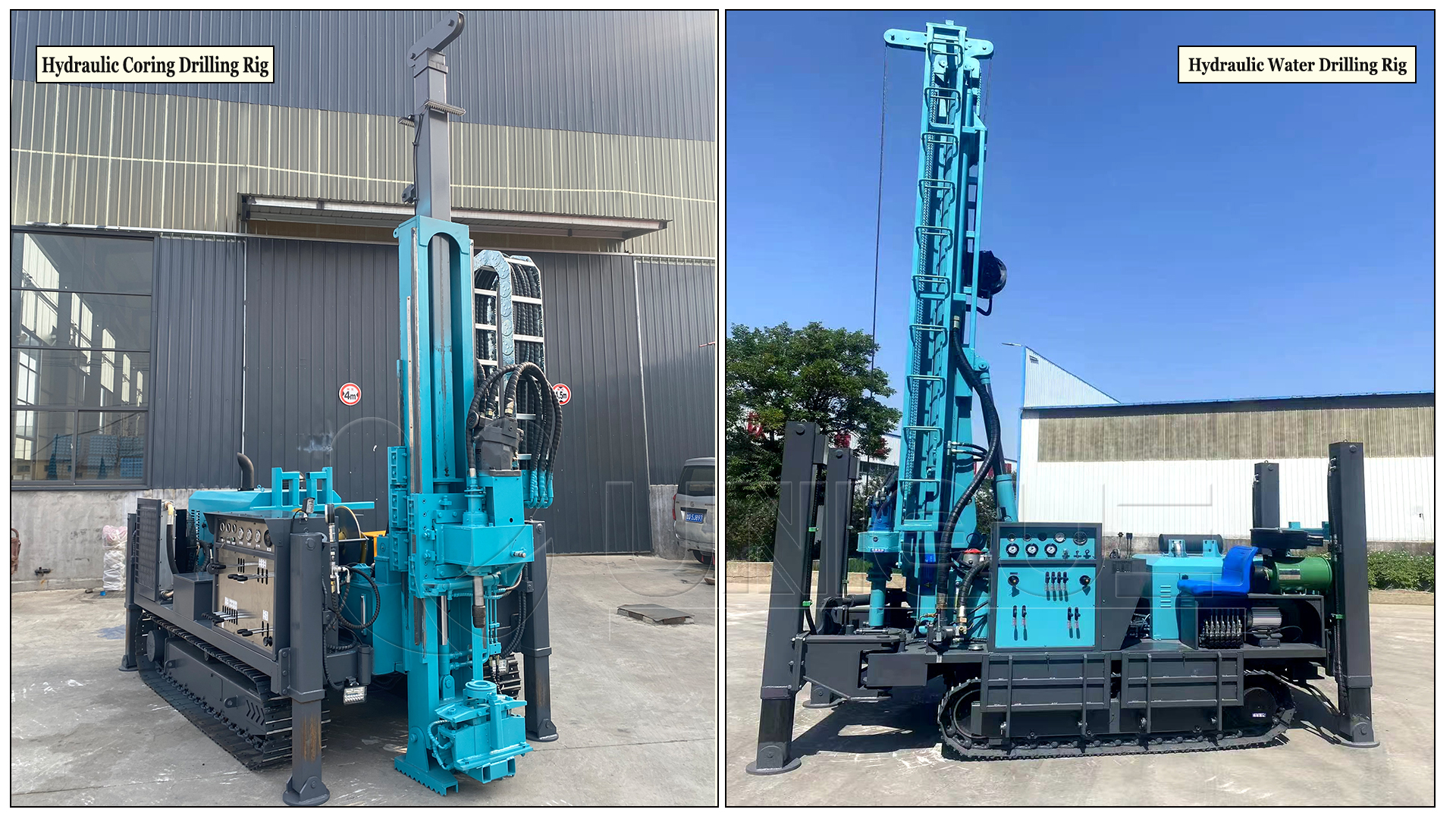Can Hydraulic Water Well Drilling Rigs Replace Hydraulic Coring Drilling Rigs?
Are you struggling to choose between a hydraulic water well drilling rig and a hydraulic coring exploration drill for your project? Many drilling professionals, from rural water supply contractors to geological exploration teams, often wonder about their core distinctions—and why swapping one for the other leads to project failures. As a trusted manufacturer of UNIQUE hydraulic water well drilling equipment, we’re breaking down these differences clearly, so you can make data-driven decisions for your drilling needs.
What Is a Hydraulic Water Well Drill?
A hydraulic water well drill is engineered specifically for groundwater access and shallow underground projects. Its design prioritizes speed, thrust, and large-hole creation—critical for efficiently reaching the water table and installing well casings. UNIQUE’s hydraulic water well drilling rigs, for example, are optimized to balance performance and durability for residential, agricultural, and small-scale commercial use.
Structural Features
•Drilling Tools: Equipped with high-strength alloy steel drill pipes (4–6 inches in diameter) that resist bending under downward pressure. The drill bits are tungsten carbide-tipped, designed to crush or grind soil, sand, and soft-to-medium rock—ideal for fast penetration. UNIQUE models often include replaceable bit heads to reduce maintenance costs.
•Hydraulic System: Integrated with a high-thrust module (5–20 kN, depending on the model) to push the drill bit steadily through formations. This ensures consistent progress even in compacted soil.
•Borehole Protection: Features a mud circulation system compatible with bentonite-based drilling fluids or clean water, which cools the bit and prevents borehole collapse in loose strata.
Operating Principle
The hydraulic system drives two key actions:
1.Rotation: Maintains a moderate speed (80–150 RPM) to keep the bit cutting efficiently without overheating.
2.Thrust: Applies adjustable downward force to penetrate formations quickly—critical for reaching the water table (typically 50–300 meters deep) in 1–2 days for most residential projects.
Typical Applications
•Residential water well drilling (6–12 inch boreholes for well casings)
•Agricultural irrigation well construction
•Shallow geothermal well drilling (for heating/cooling systems)
•Rural community water supply projects
What Is a Hydraulic Coring Exploration Drill?
A hydraulic coring exploration drill is built for geological sample collection. Its sole purpose is to extract intact rock or soil cores—essential for analyzing mineral content, strata structure, or environmental contaminants. Unlike water well drilling rigs, speed takes a backseat to sample integrity.
Structural Features
•Coring Tools: Uses sealed core barrels (double-tube or triple-tube designs) to isolate rock samples from drilling debris. The drill bits are diamond-tipped or PDC (polycrystalline diamond compact) bits—sharp enough to cut hard rock but gentle enough to preserve core layers.
•Precision Controls: Includes a low-thrust hydraulic module (2–8 kN) and a core retention mechanism (e.g., rubber gaskets) to prevent sample breakage during retrieval.
•Sample Protection: Compatible with low-viscosity, non-reactive drilling fluids (e.g., water-based fluids with anti-swelling additives) that avoid altering the core’s chemical or physical properties.
Operating Principle
The hydraulic system focuses on precision over power:
1.High-Speed Rotation: Operates at 150–300 RPM to make clean, smooth cuts in hard rock (e.g., granite, limestone).
2.Low Thrust: Applies minimal downward force to avoid crushing the core. After cutting a 1–2 meter section, the drill pauses to retrieve the core barrel—ensuring the sample remains intact.
Typical Applications
•Mineral exploration (e.g., gold, copper) for grade and distribution analysis
•Oil/gas pre-surveys to map geological strata
•Environmental soil sampling (e.g., detecting groundwater contamination)
•Deep geological research (drilling depths of 500–2000 meters)

Why They Can’t Be Substituted
Substituting these drills leads to project delays, cost overruns, or useless results. Here’s why:
A. Hydraulic Water Well Drills Can’t Replace Coring Drills
1.No Intact Samples: Tungsten carbide bits crush rock, destroying any potential core. Even with a core barrel, the drill’s high thrust (5–20 kN) would crush the sample—making geological analysis impossible.
2.Wrong Hydraulic Settings: Moderate RPM (80–150) causes uneven core edges, while the lack of a core retention mechanism leads to sample loss during retrieval.
3.Impractical Depths & Sizes: Water well drills can’t reach the 500+ meter depths needed for mineral exploration. Their large boreholes (6–16 in) also waste drilling fluid and energy for coring tasks.
B. Hydraulic Coring Drills Can’t Replace Water Well Drills
1.Extremely Slow: Coring drills pause to retrieve cores every 1–2 meters. A residential water well that takes 1 day with a UNIQUE water well drill would take 2–3 weeks with a coring drill.
2.Insufficient Thrust: Low thrust (2–8 kN) can’t penetrate compacted soil or medium-hard rock—leading to bit jams and hydraulic system damage.
3.Too Small for Well Casings: 2–6 in boreholes can’t fit standard well casings (6–12 in) or well screens, which are required to prevent collapse and filter sediment.
Choose the Right Drill for Your Project
For water access (residential, agricultural, irrigation), UNIQUE’s hydraulic water well drilling rigs deliver the speed, thrust, and durability you need. For geological sampling (minerals, environmental surveys), a hydraulic coring exploration drill is the only option to preserve sample integrity.
Still unsure which drill fits your needs? Our UNIQUE team of drilling experts offers free project assessments. Contact us today to learn about our hydraulic water well drill models or get personalized recommendations!

